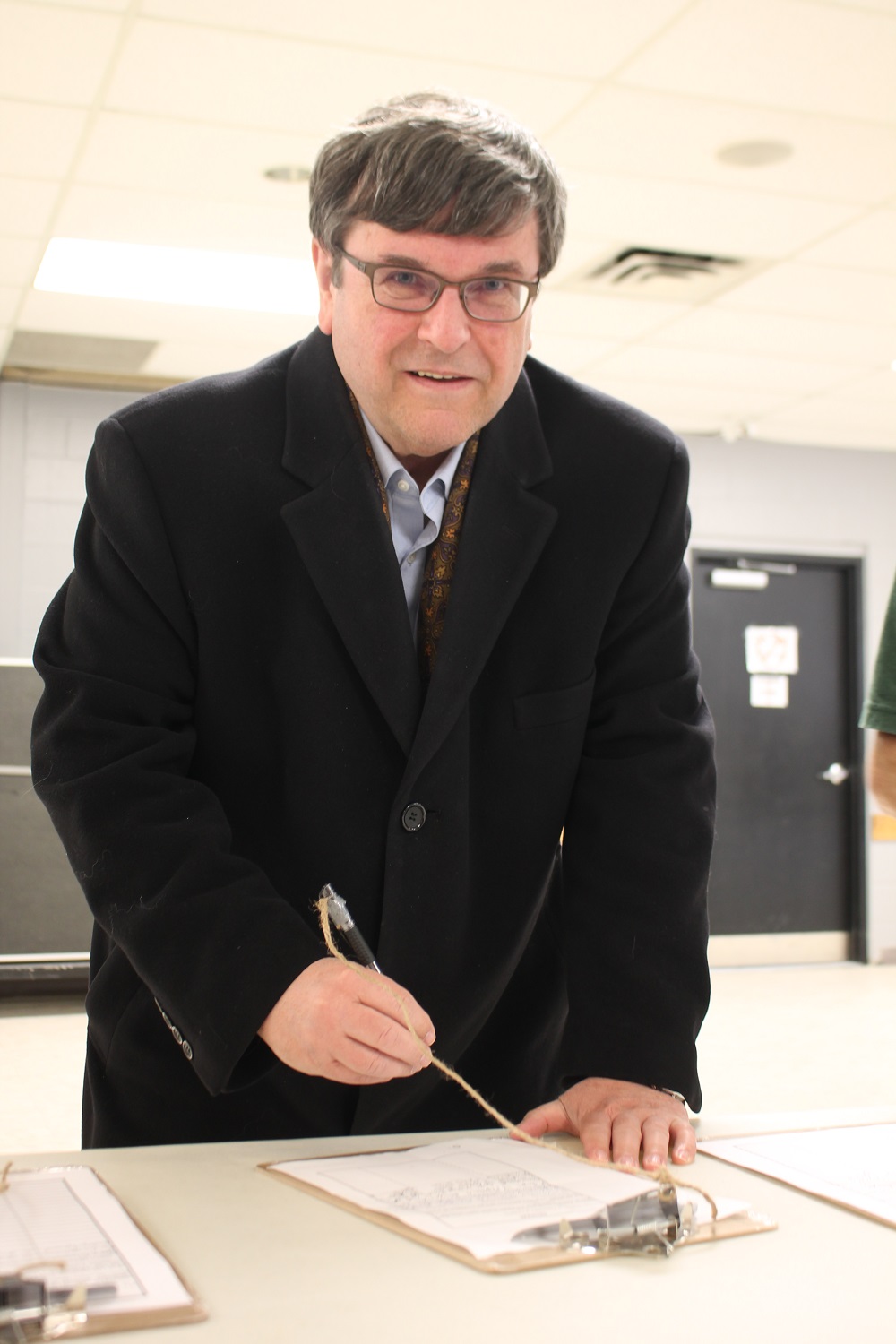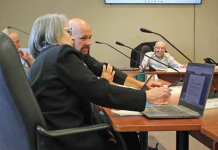Staffing challenges continue for both the Haliburton emergency department and Minden’s urgent care clinic, with the clinic forced to close its doors Jan. 15, for the first time since going full-time.
The Kawartha North Family Health Team, which operates the clinic at the former Minder ER site, posted to its Facebook page Jan. 12 that this past Monday’s shuttering was “due to staffing issues” and apologized for the inconvenience.
The move coincides with comments by County councillor and Minden Hills mayor Bob Carter, claiming people are being turned away at the clinic because current staff cannot handle patient volumes.
Carter told a Jan. 10 County council meeting he’s heard stories of people showing up at the clinic at 11 a.m. and not being seen as “they’ve got enough people already in the waiting room for the rest of the day.”
He further claimed the Haliburton ER is being overrun with patients with insufficient staff.
Carter was addressing an upcoming Haliburton County delegation to the Ministry of Health that has been approved for the Rural Ontario Municipal Association (ROMA) conference Jan. 21-23 in Toronto.
Speaking to Carter’s claims, Marina Hodson, executive director of KNFHT told The Highlander on Jan. 11, “I don’t know that that’s (11 a.m.) ever happened. In fact, I would say it’s never happened. That seems unlikely that we maxed out in an hour (the clinic opens at 10 a.m.).”
However, she conceded, “there are days, absolutely, we have had to turn people away. It’s not the norm by any means. Most days we do seem to be able to accommodate everybody.”
Hodson said they recently added some second nurse practitioner staffing during the week, “which I think will help. I think overall, we seem to be managing quite well. In December, we had well over 300 patients that we were able to see.”
County to speak to Ministry of Health
Hodson said since opening full-time Oct. 3, the clinic is averaging around 25 people a day. Hodson added the figure does not include people they have to send to Haliburton emergency, but there are “very few” of those.
The executive director said they’re technically supposed to have two full-time nurse practitioners and they only have one, as well as part-timers.
“That’s always the challenge, is getting nurse practitioners, it’s the same as getting physicians… we’re getting there but we’re not quite there yet, but pretty close. So, we definitely need one and I just reposted it again. But it’s not easy.”
Hodson said they had not had to close or reduce hours as a result, until Dec. 15.
It’s going to become an issue. When you only have one NP… first of all, we can’t see as many patients in a day. But the second thing is what happens when that NP wants to take vacation because they don’t want to work 52 weeks a year, and we don’t want them to either because then they burn out and we have no care. So, when she needs time off, how are we going to accommodate that? Because our part-timers work weekends. Most of them have other jobs.”
She said they may be able to plug in a day here or there but cannot commit to a full week, for example.
Haliburton ER numbers
Lauren Ernst, communications for Haliburton Highlands Health Services, said on Jan. 15 they’d experienced “periodic staffing pressures due to illnesses.”
She added the emergency department and inpatient unit nursing staff had become more stable, and their reliance on agency staff has reduced from 151 12-hour shifts in June to 59 12-hour shifts in December.
“Unfortunately, HHHS is not alone in this – many rural hospitals in Ontario are feeling similar pressures,” she said.
Ernst said that during peak seasons, such as the summer, HHHS upstaffs nursing and physician coverage. “Now that we are in regular season, we are at our regular staffing complement.” However, she added, “we continue to rely heavily on locum physicians to cover ED shifts as we continue to recruit for permanent ED physicians. We encourage everyone to welcome potential staff and physicians as they try out our community.”
As for patient volume, Ernst said the department saw 1,112 people in December; 1,085 in November, 1,330 in October, 1,395 in September, 1,831 in August, 1,966 in July and 1,495 in June.
Asked for context she said, emergency department (ED) volumes are based on all patients who were triaged, seen by a physician, and then discharged (sent home), transferred to another facility for further care, admitted into the inpatient unit, or passed away.
County council and Minden Matters
Carter said the County, province and country are in a health care “crisis.” He would like the provincial government to reconsider funding medical students in exchange for them practising in underserviced areas.
He said he had spoken with visiting locums and, “they’re not interested in coming here.” He added the province is opening the door to doctors from the U.S., Australia, UK and Ireland, but they want to practice in the city, not rural and regional Ontario.
Warden Liz Danielsen, who now sits on the Haliburton Highlands Health Services board, said HHHS had given her a one-page document for the ROMA delegation. She said she’s been asked to stress things such as transportation, housing, and the need locally for a community centre and swimming pool.
“I get it that the doctors would like to have a pool but that’s far beyond our capabilities, given the other priorities that we’ve got in place right now,” Danielsen said.
Coun. Murray Fearrey also raised the issue of agency nurses making $100-an-hour, working alongside staff nurses at $40-an-hour, saying the province has to address that inequity.
Minden Hills coun. Pam Sayne sits on the board of ROMA and said they would be releasing a fact-based paper on the rural health crisis at the conference.
Meanwhile, responding to the Canadian Medical Association again emphasizing it is in crisis due to staffing, Minden Matters issued a press release Jan. 11.
They are calling on the Ontario government to take immediate action to reopen the Minden emergency department and invest in rural healthcare facilities.
They say rural Ontarians are experiencing significant difficulties in accessing timely and high-quality healthcare services.
“The closure of rural hospitals, coupled with a shortage of healthcare professionals, has left these communities vulnerable and underserved. The strain on the remaining healthcare facilities, including emergency rooms, has reached critical levels.”
They are calling, in part, for increased funding to attract and retain nurses and doctors in rural areas.
“Scholarships, loan forgiveness initiatives, and financial incentives should be implemented to encourage healthcare professionals to practice in rural communities. By promoting rural healthcare as an attractive career path, we can ensure a sustainable workforce in these areas.”





